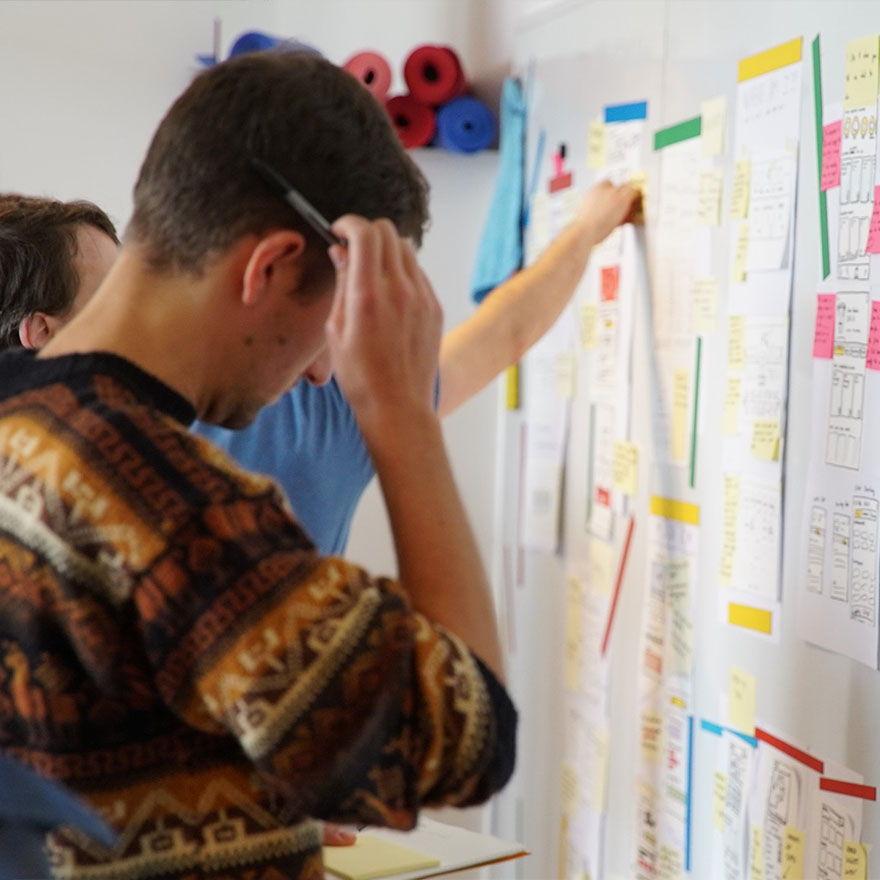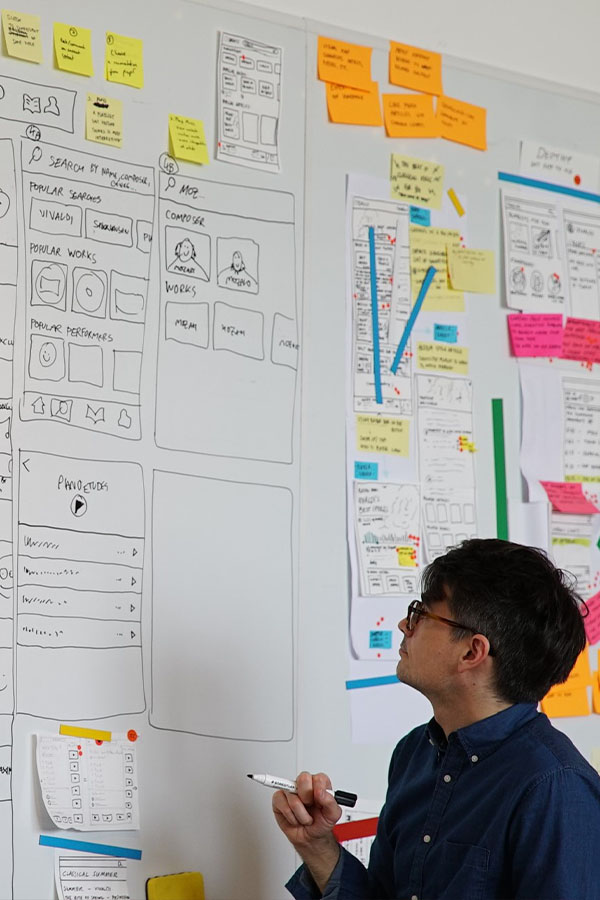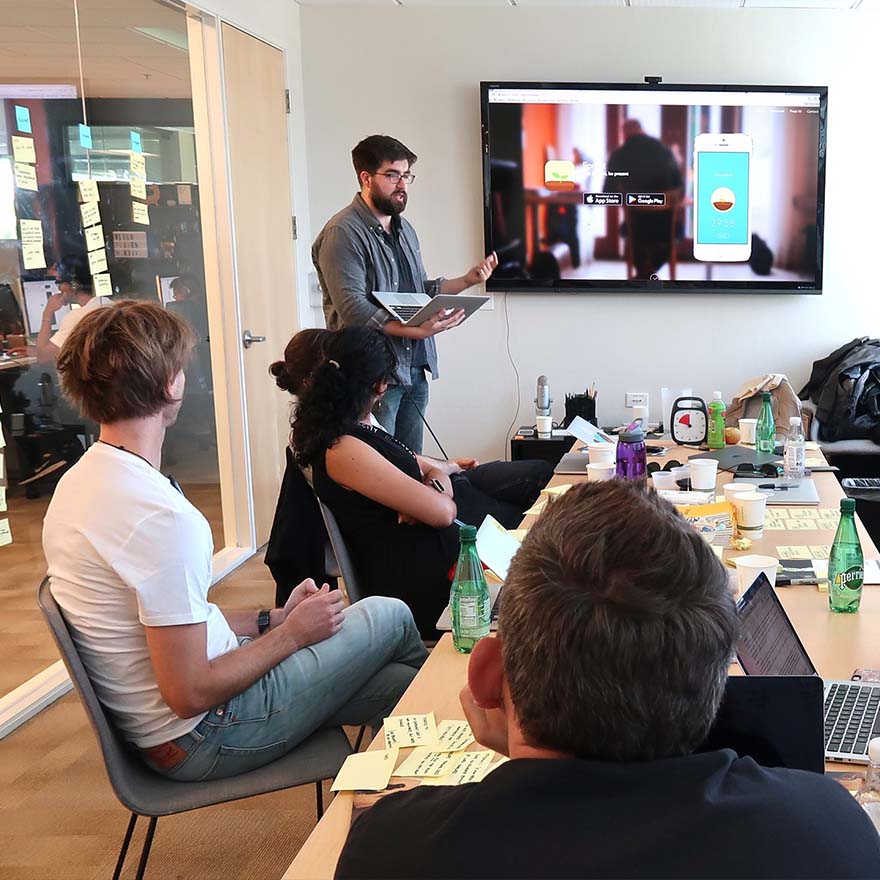A bespoke approach
A Design Sprint is what it says on the tin – a fast-paced, three-to-five-day process, created by Jake Knapp at Google, to create a testable prototype quickly.
Various design thinking exercises are carried out in order to reduce risks, convince investors, reduce the development of unnecessary features, increase return on investment and most importantly, to validate the design concept.
What are the principles?
- Work together, alone
- Create tangible ideas over discussion
- Getting started > being right
- Reduce reliance on creativity


Who should use Design Sprint?
Design Sprint has been used by thousands of companies around the world, including some of the most innovative such as Nestle and Adobe, and is highly regarded by innovation managers and marketers alike.
Design Sprint is perfect for digital transformation challenges. In this digital era, businesses are constantly faced with creating digital alternatives to business strategies, and Design Sprint is perfect for fast tracking these solutions.
Design Sprint can:
- Maximise your Return on Investment (ROI) by condensing a month’s worth of work into just a few days, saving time and additional costs.
- Allow teams to systematically incorporate design activities into the development process
- Ensure consistent delivery of strong, innovative products.
- Lead to more positive user experiences of your product or service, since the Design Sprint is customer-centric and design-driven.

PANDEK Group’s Design Sprint
Our qualified PANDEK Group coach, Paul Kelly, has completed a Masterclass course in Design Sprint certified by AJ&Smart – Design Sprint specialists.
Paul has worked with exciting clients using the design sprint process, receiving great feedback surrounding the benefits (both financial and temporal).
We use Design Sprint 2.0
Design Sprint 2.0 is the newly updated version of the Sprint, renewed in 2018.
So, what’s new?
The 2.0 version takes place over four days instead of five, making it even more efficient. The entire team is only needed for two days out of the entire process, meaning less people must clear their weekly schedule for maximum outcomes.



